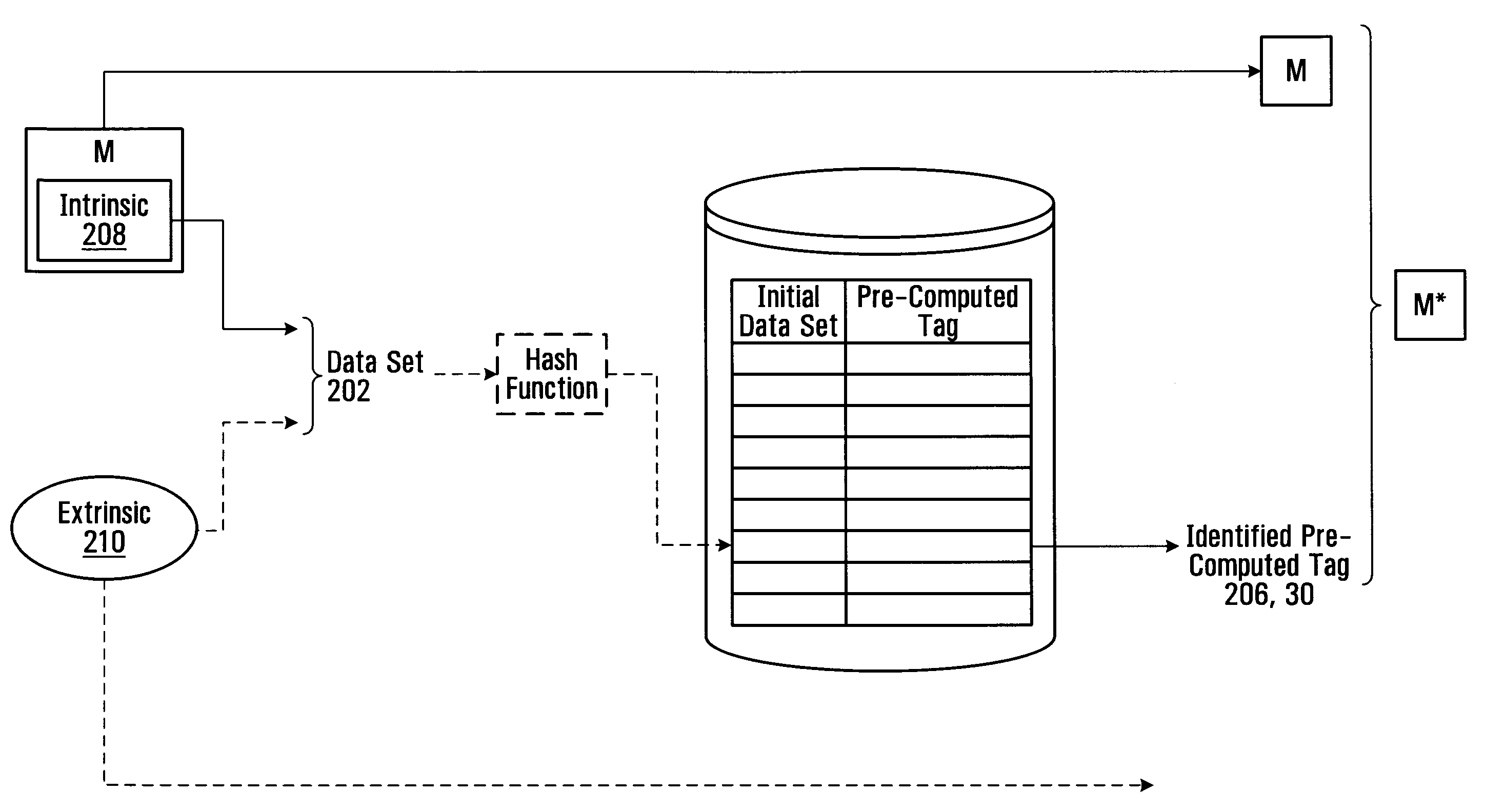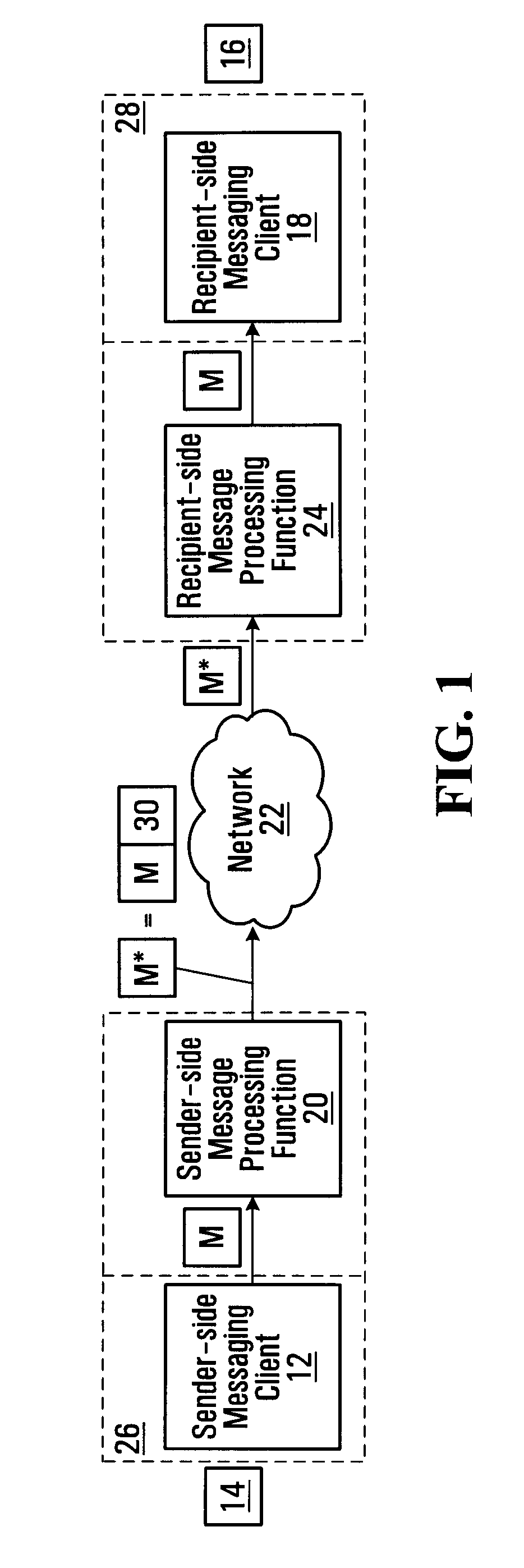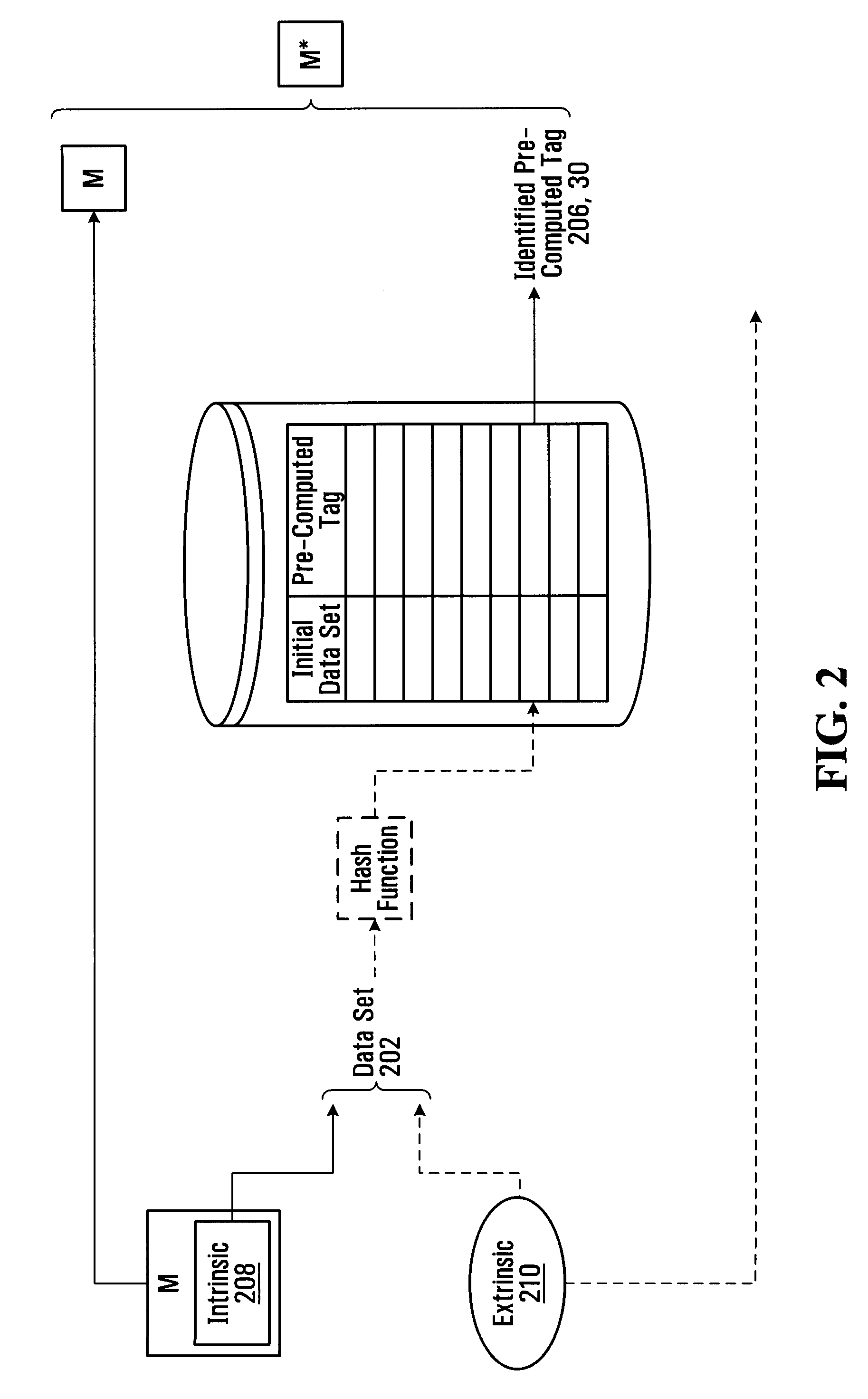Methods for establishing legitimacy of communications
a technology of legitimacy and communication, applied in the field of communication, can solve the problems of difficult to define precisely the concept of communication, unsolicited communication, and not even easy for the sender
- Summary
- Abstract
- Description
- Claims
- Application Information
AI Technical Summary
Problems solved by technology
Method used
Image
Examples
first embodiment
[0360]In Approach 3, any of Approaches 1 and 2 is used and then an additional quick tag calculation is done for an easy problem (“easy” in the sense of readily doable on whatever hardware is at hand), but in real time (i.e. without any perceptible delays). The rationale behind this approach is that a sender can express a extra amount of sincerity by doing a easier calculation now that is specific to all or part of the actual message being communicated, as well as the more difficult calculation the sender did earlier (for example, yesterday) before the sender knew what he or she wanted to say and / or with whom the sender wished to communicate. In the framework of social analogies, the equivalent might be that someone turned up with flowers they had bought yesterday (and perhaps were even for someone else, in certain embodiments) but the extra effort of opening the door for the recipient when the sender meets the recipient, while less of an effort, is an effort nonetheless, and it is a...
case 1
[0429]In b.ii, one could send all the factors but for p3 (assuming it was the largest). On the receiving end it would be fast to find P divided by all the sent factors and find the remaining factor. This can then easily be tested to see if it is prime, and can also be tested to see if it was indeed the largest prime factor (if that was required).
[0430]In case 1.b.iii, if one sent just the largest prime factor, or a large prime factor, then it would be fast to divide P by that factor leaving a smaller number R as remainder. (Testing that the number sent was indeed prime is easy to test). This in itself would be a good proof that the computational work had been done since the remaining work in factoring R would be small. One could do the remaining work as part of the test and check if the prime sent was indeed the largest (if that was required).
[0431]In case 1.b.v, one could replace any of the prime factors with hashes to smaller numbers, for example, some set of selected digits of th...
PUM
 Login to View More
Login to View More Abstract
Description
Claims
Application Information
 Login to View More
Login to View More - R&D
- Intellectual Property
- Life Sciences
- Materials
- Tech Scout
- Unparalleled Data Quality
- Higher Quality Content
- 60% Fewer Hallucinations
Browse by: Latest US Patents, China's latest patents, Technical Efficacy Thesaurus, Application Domain, Technology Topic, Popular Technical Reports.
© 2025 PatSnap. All rights reserved.Legal|Privacy policy|Modern Slavery Act Transparency Statement|Sitemap|About US| Contact US: help@patsnap.com



